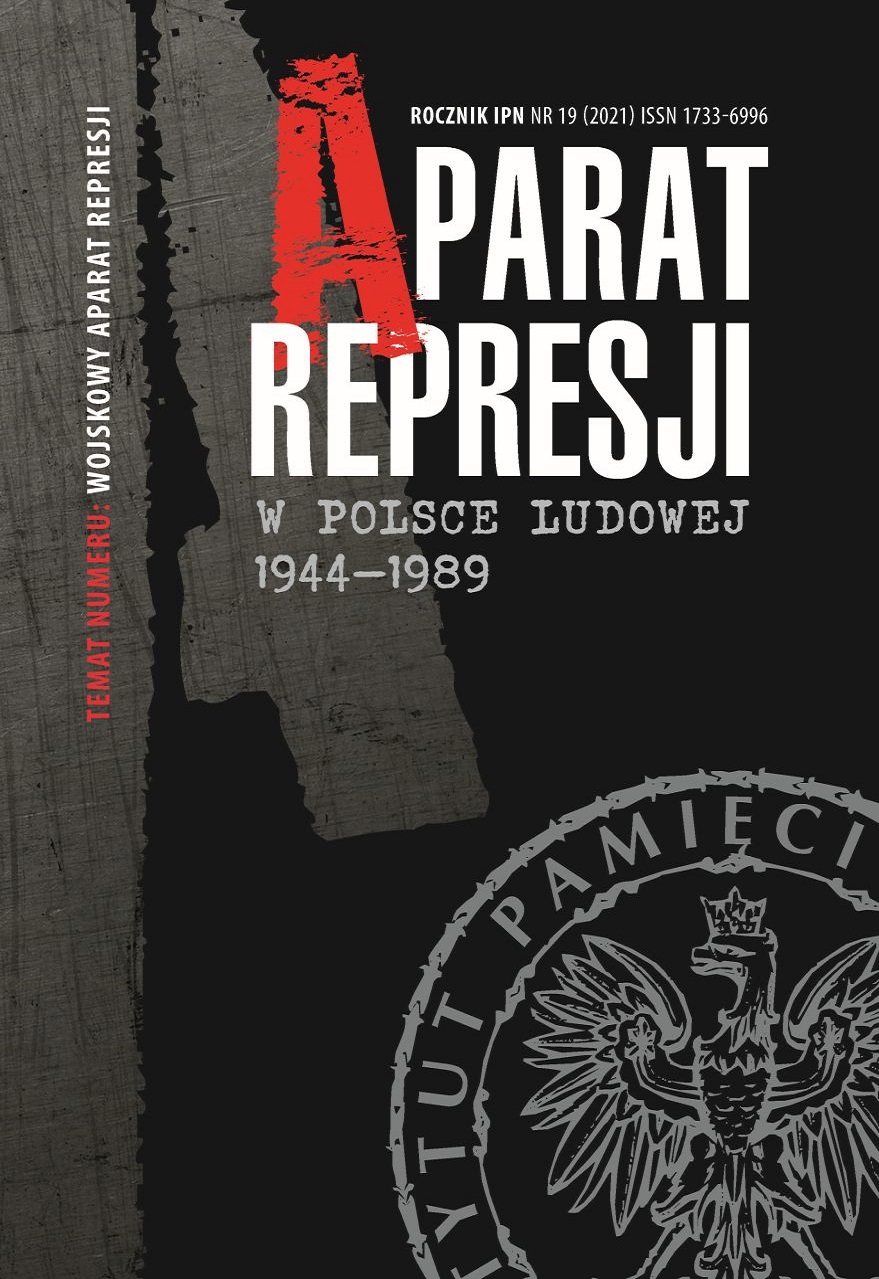Scientific and Technical Intelligence of the Polish People’s Republic and Military Technologies – Selected Issues
Aparat Represji w Polsce Ludowej 1944-1989, No. 19 (2021), pages: 242-274
Publication date: 2023-03-29
 https://doi.org/10.48261/ARPRL211907
https://doi.org/10.48261/ARPRL211907
Abstract
The aim of this article is to reconnoitre a new field of historical research. It may be defined as: the effects of the work of the scientific and technical intelligence of the Polish People’s Republic (PRL) in the field of technologies of military use. Research on civilian technologies is relatively advanced, while the transfer of (mainly Western) solutions from the field of armaments industry has so far constituted only a margin of various historical works on the history of intelligence of the People’s Republic of Poland, including military intelligence, as well as the history of science and technology. The author focuses on a few selected aspects. The first is the widely understood arms market in the People’s Republic of Poland (PRL), including Poland’s obligations as a member of the Warsaw Pact, as well as its political and economic dependence on the Union of Soviet Socialist Republics (USSR). The second part discusses the approach of NATO countries trying to slow down the technological progress of the Eastern Bloc, mainly by controlling and hindering the purchase of modern products of so-called dual (i.e. civilian and military) use by countries such as the PRL. In the next chapter, the author discusses perhaps the most spectacular example of the successful infiltration by the intelligence community of the Warsaw Pact countries into the Pentagon’s armament programmes. He points out, however, that Poland achieved marginal gains from this operation, mainly based on its agent assets. The last section of the article is devoted to the prospective theatre of armed conflict between the superpowers, which, since the 1980s at the latest, was space. The orbital weapons race began as the communist states, especially the Union of Soviet Socialist Republics (USSR) and the People’s Republic of Poland, fell into irreversible economic crisis. Despite this, the intelligence services of these states at least tried to get an idea of the progress of the USA in the field of militarisation of space. The author conducted his research mainly based on sources held in the Archives of the Institute of National Remembrance (IPN). However, documents obtained from the archives of the French Ministry of Foreign Affairs are an important supplement.
License

This work is licensed under a Creative Commons Attribution-NonCommercial-NoDerivatives 4.0 International License.
https://creativecommons.org/licenses/by-nc-nd/4.0
Most read articles by the same author(s)
- Mirosław Sikora, Operational Control of Large Industrial Plants by the Security Apparatus of the Polish People’s Republic. The Example of the Częstochowa Steelworks during 1950–1990 , Aparat Represji w Polsce Ludowej 1944-1989: No. 20 (2022)
- Mirosław Sikora, Kierunek działań operacyjnych Służby Bezpieczeństwa wobec inteligencji technicznej na przykładzie kadry naukowej Politechniki Śląskiej i Politechniki Częstochowskiej , Aparat Represji w Polsce Ludowej 1944-1989: No. 1(5) (2007)
- Mirosław Sikora, Information support of civilian intelligence for heavy industry and energy of the Polish People's Republic (1970-1990) , Aparat Represji w Polsce Ludowej 1944-1989: No. 1(17) (2019)
- Mirosław Sikora, Edmund Ryszard Ronowicz (1915–2003), sędzia WSR w Katowicach , Aparat Represji w Polsce Ludowej 1944-1989: No. 2(4) (2006)
 Język Polski
Język Polski
 English
English



 PDF (Język Polski)
PDF (Język Polski)
